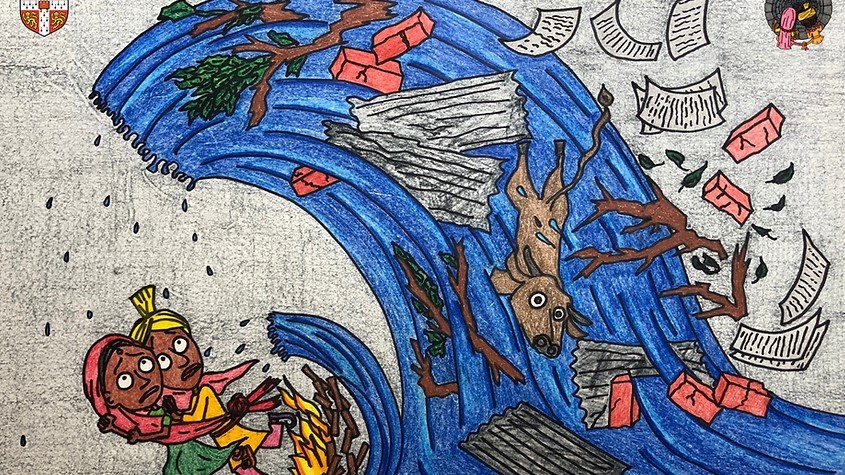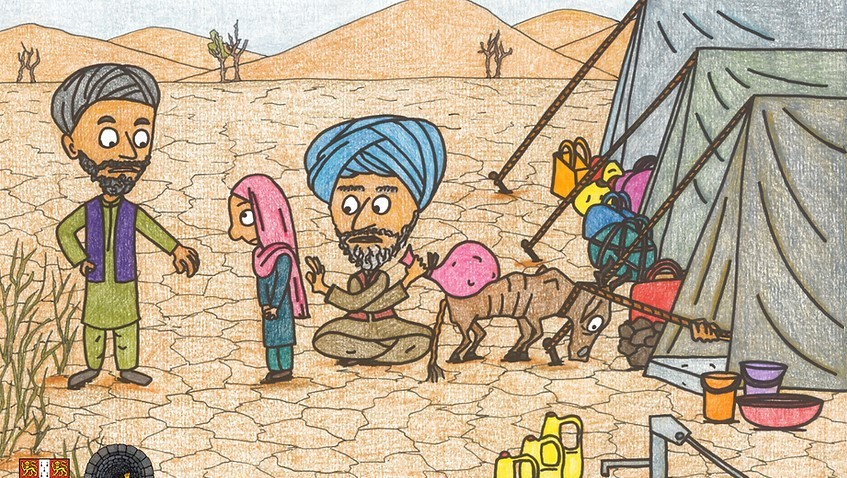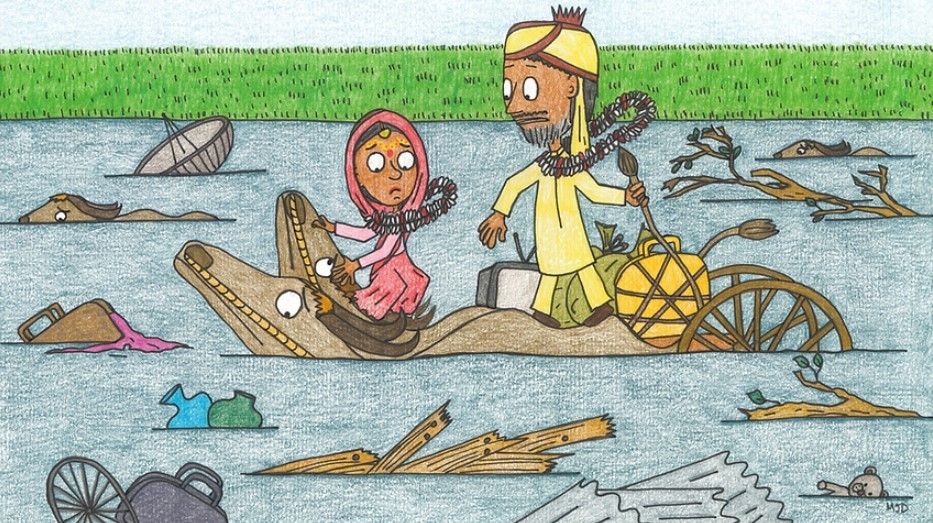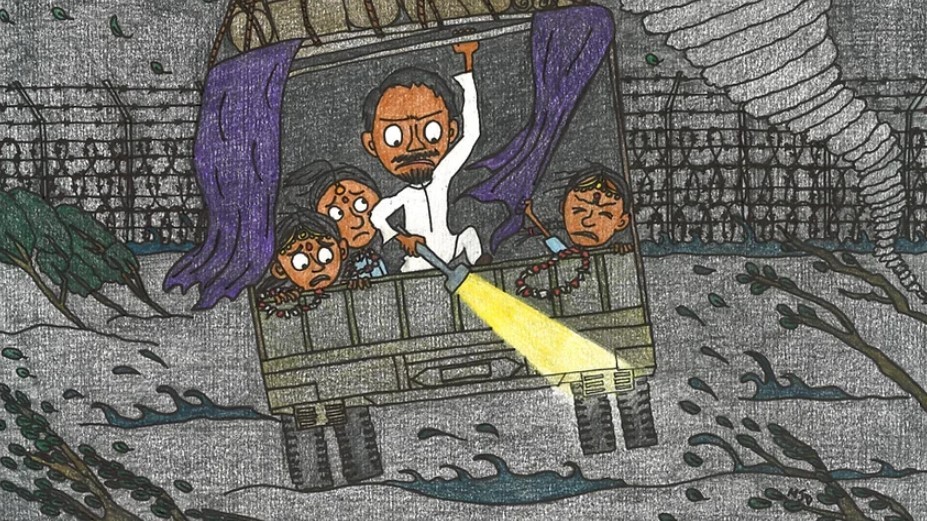As per a recently released report by the UN, South Asia is home to 290 million child brides, which account for 45% of the global total. To enhance the perspective, around one in four young South Asian women were married or in union before their 18th birthday.
The decision to wed a young girl before she turns 18 is driven by numerous interdependent factors such as social pressures, household economics and sexual violence. A common cause that exacerbates these factors is the climate crisis.
Studies have shown increased rates of child marriages in countries like Bangladesh, India, Pakistan and Sri Lanka after occurrence of natural calamities such as drought, flash floods and heat waves. A domino effect of these climate crises—fuelled disasters are several interrelated obstacles such as scarcity of potable water, fuel and food and rise in gendered violence. Countless studies have shown that marrying off a minor daughter during a climate-related disaster is considered an economically sound decision, having one less mouth to feed.
Delving deeper into this intricate and irrefutable equation between climate change and early marriages is the groundbreaking podcast Climate Brides. Hosted by journalist and researcher Reetika Revathy Subramanian, the podcast produces a series of insightful conversations with survivors, frontline workers, activists, and researchers in and from South Asia, to understand the ground realities of young women braving the many monumental challenges of climate change.
The podcast has covered multiple regions and subjects.

In the foremost episode of the podcast, listeners are taken to East Africa, where Professor Nitya Rao’s extensive work with indigenous communities and their combat with climate change is discussed in detail. At the beginning of the episode, Professor Rao sets the tone for an astute conversation, with a discussion on the sheer difference between jargon and discernible language posing as a barrier between academicians and regular people. Thereon, this interesting dialogue veers towards gender-differentiated tasks and the impact they face with changing weather—a situation best exemplified with scores of women in Palghar losing their jobs and livelihoods owing to reduced Bombay duck production.
Professor Rao’s stirring description of the cascading effect of drought, water shortage and receding green pastures on women and young girls being forced to resort to sex work for money remains the most overwhelming part of the episode.
Further, listeners are introduced lesser-known issues such as bride prices in Afghanistan and ‘seasonal’ brides in coastal Bangladesh.

With independent journalist Ruchi Kumar, listeners are taken to the arid land of Afghanistan, where climate conflict is weaving a dreary picture for thousands of young girls stationed in the Internally Displaced Persons Camps (IDPs).
In Afghanistan, the groom’s parents give the bride’s parents a generous dowry, in a contrast to the custom in India. This practice has taken a turn for the worse, with families in abject poverty perceiving the dowry as a strong incentive to marry their daughters younger and younger, especially given the droughts waging the country. This issue along with the dwindling women-led businesses, an attack on the right to education and more is discussed extensively in this curious episode.

Thereafter, Mr. Syed Aminul Hoque from COAST Foundation delves into the ecologically vulnerable country of Bangladesh. It is estimated that by 2050, one in every seven people in Bangladesh will be displaced by climate change.
While poverty and a debilitating economic condition resulting from cyclones and other natural calamities are a common feature in the country, seasonal marriages are seeing an unprecedented increase.
What is a seasonal marriage? Picture a small area inhabited by families dependent of fishing activities to earn a living. Now, picture a dull fishing season, when produce is low due to a natural calamity or cyclone. Agents from the city infiltrate such communities in these vulnerable times and prey on their economic insecurities by offering a lump sum amount in exchange of their daughter. This harrowing reality is explored in detail in the third episode of the podcast.

The Indian context of this equation is explored in the fourth episode of the podcast, where Dr Upasona Ghosh from the Indian Institute of Public Health, Bhubaneswar, elaborates on the links between recurring floods and cyclones and the high prevalence of child marriage and trafficking in the Sundarbans.
Noting the Cyclone Aila, which hit the region in 2009, as a pivotal moment Dr. Ghosh describes the broken aid economy and policies for the Sundarbans. The temporary, yet forced migration of the men of the region for employment, leaves behind women and children to fend for themselves. This pushes them either to take up risky jobs such as standing for long hours in waist-high water to catch crabs, or to simply get married at a young age and leave your family with one less mouth to feed.
In conclusion, the correlation between climate crisis and early marriages is an under-explored subject. It won’t be an exaggeration to say that Climate Brides is offering much-needed social awareness packaged in the now familiar and personal platform of podcasts. Those who prefer the written word can find the transcripts of every episode here. The illustrations by Maitri Dore, only make reading each of these transcripts an immersive experience, with the befitting image transporting you to the conflicted land.
Tune into the podcast to unravel a world of social injustices borne by young girls and weaker communities inhabiting climate vulnerable regions of the world.




